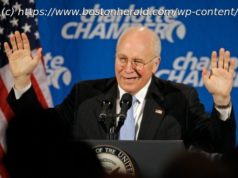Episode VIII examines power and brings hope to a weary universe.
When it was released in 1977, the first Star Wars movie only bore the title Star Wars. Later, the subtitle A New Hope was added — and with it, a subtle intimation of what this series is all about. The Star Wars saga explores lots of ideas, but one it keeps cycling back to is the idea of hope. Where does it come from? Why? And when it looks like the last glimmer of hope has been extinguished, is there any reason to go on?
For decades, each Star Wars installment has explored those ideas, moving from hope to despair and back again as a fundamentally moral political battle wages between a dark side bent on its own immense power and a scrappy bunch of rebels who dare to think everyone matters. And now, 40 years after it all started, the eighth installment in the Star Wars series, The Last Jedi, retreads that basic setup with a mastery that isn’t just reminiscent of the series’ best entries, but takes its place alongside them.
I don’t want to spoil the movie for you. You don’t want that either.
So let me just say…
( Seriously, if you don’t want any spoilers at ALL, not even basic place-setting stuff, then just take my word for it and go see the movie.)
…that The Last Jedi picks up more or less exactly where The Force Awakens left off, with the evil First Order ready to strike back against Resistance forces in retaliation for destroying their superweapon, the Starkiller Base. The rebel army is still led by General Leia Organa (the late Carrie Fisher, in her final Star Wars appearance). Hotshot Resistance pilot Poe Dameron ( Oscar Isaac) — with his droid pal BB-8 — is out in front in the counterattack, going briefly rogue to accomplish his mission, while Finn ( John Boyega) is healing from the wounds inflicted on him by Darth Vader heir-apparent Kylo Ren ( Adam Driver, who continues to knock it out of the park).
Meanwhile, on the faraway planet Ahch-To, Rey ( Daisy Ridley) — who now knows she can harness the Force herself — has just encountered Luke Skywalker ( Mark Hamill) and handed him his lightsaber.
The Last Jedi follows the resistance fighters as they struggle to survive through an increasingly painful series of blows, exacerbated by the First Order’s newfound ability to track their forces through hyperspace jumps. This realization sends Finn and ship’s engineer Rose (a fantastic Kelly Marie Tran) to a new planet where they search for someone who can help them. Meanwhile, though Rey and Kylo Ren are far away from one another, they seem to be experiencing a psychic connection that suggests the answers to some of their questions about themselves and each other may lie in surprising places.
The strength of 2015’s The Force Awakens came from its careful retreading of ground that was already broken by earlier Star Wars films, in ways that pleased fans who were terrified this new trilogy would repeat the mistakes of George Lucas’s «prequel» trilogy. The Force Awakens calmed fears, reminded viewers why the series worked in the first place, and introduced a more diverse set of characters that made the whole Star Wars thing feel fresh and fun again.
And yet, if The Force Awakens was a great variation on a theme, then The Last Jedi is another movement altogether in the symphony. There are images in this movie that provoke awe and delight, and creatures that feel lifted out of half-remembered childhood dreams. And though it briefly appears to lose steam in the middle, that’s short-lived, with a third act harboring sequences that feel like a maestro conducting a concerto the size of the cosmos.
There is catharsis aplenty, something the Star Wars movies are designed for, encouraging us to cheer when our favorite characters show up on screen and letting us thrill to the chases and the romance and the vistas and the explosions and the lightsaber battles. (This installment has one of the most purely perfect lightsaber battles the series has yielded thus far.) But as written and directed by Rian Johnson, The Last Jedi doesn’t just feel like a well-executed Star Wars movie — it feels like a well-executed movie, period, one that keeps its eye on the relationships between characters, and how they communicate with one another, in addition to the bigger picture.
Some of this has to do with the fact that The Force Awakens did the heavy lifting by introducing (or in some cases reintroducing) these characters to us, so Johnson doesn’t have to start from scratch. But one of Johnson’s strengths as a writer and director has always been injecting humanity and intelligence into characters who live inside familiar genres; they’re definitely characters, but they’re people, too. He knows how to make us feel for them.
That means that a character like the loser General Hux ( Domhnall Gleeson as a marvelous sad sap), locked in his eternal battle with Kylo Ren for dominance and the attention of Supreme Commander Snoke ( Andy Serkis), is the butt of many jokes, but he also has a glimmer of the unwanted pet dog about him that lends a little pathos to our scorn.
It means we get a character like Rose, who trips believably over herself when she first meets Resistance Hero Finn, but quickly shows she’s brilliant, and has a strong and courageous side too. It means Luke becomes more than a reclusive hero-in-waiting, coming to recognize the battle that’s been raging inside of him and how it colors the way he interacts with the world, and with Rey.
Thanks to Johnson’s impish sense of humor, the film is littered with jokes — some of the best obviously nod to various fan theories that have sprung up in The Force Awaken’ s wake — as well as allusions to other films and a truly wonderful menagerie of fauna ranging far beyond the already-beloved puffin-like porgs, all of which brings warmth and humor to a story that is, at its core, very serious.
But the best details are in the strong bonds that develop between characters, and the way those bonds show who each individual really is. When one character says that the only way to live free is to not join, it’s the film’s encapsulation of what constitutes a bad guy: Star Wars films are testaments to the idea that nobody, not even a Jedi Master, can go it alone without getting destroyed.
The Last Jedi is also a deeply political film, though not in the sense that it’s «the film we need right now,» designed to speak to our «current moment» — in a saga as mythic and timeless as Star Wars, that would be a serious mischaracterization. But Star Wars is fundamentally cyclical, a story of generations and history, and the ways that wars can be won in one generation and lost in the next if memory of the past isn’t preserved. That’s the story in the films, but it’s also the story of the films, with people who grew up watching Star Wars movies now bringing their children to new Star Wars movies. And it’s no spoiler to say that the generational nature of its tale is something The Last Jedi alludes to explicitly several times.
Since the movies are part of our world as much as their own, it’s only natural they’d speak to the big, important ideas that animate political questions of every age.






